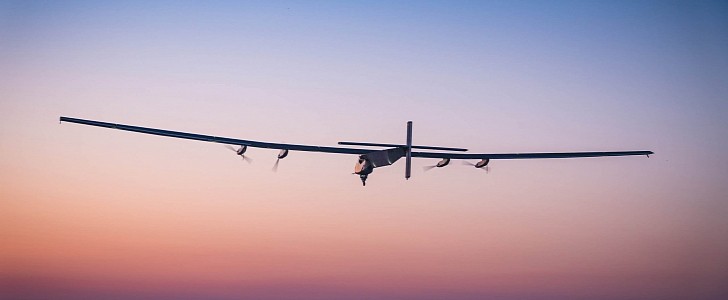Skydweller hit a milestone on its way to developing the most advanced solar-powered, autonomous aircraft, capable of perpetual flight. Recent flight tests demonstrated the company’s innovative autonomous waypoint navigation system, an important step towards a 100% unmanned aircraft.
If you’re not familiar with Skydweller, you should know that this U.S.-Spanish aerospace company is developing a new class of unmanned aircraft, one that combines the features of a solar-powered airplane with the capabilities of a geosynchronous satellite (a satellite with a fixed position and an orbital period that matches the Earth's rotation period). In other words, this zero-emissions, autonomous aircraft will be capable of achieving perpetual flight, while carrying heavy, powerful telecommunication payload.
During this recent series of tests conducted in Albacete, Spain, the company’s engineers and meteorologists evaluated all the autopilot commands and the aircraft’s advanced weather and climate data analysis capabilities. Since it’s solar-powered, the Skydweller depends on the weather, so the company has also developed advanced weather and climate forecasting models that will be used to establish optimized flight routes.
The multi-national startup has ambitious goals – it’s determined to develop “the most sophisticated, commercially viable autonomy” for a solar-powered aircraft. Considering that earlier this year, it was awarded a contract by the U.S. Naval Air Systems Command (NAVAIR), it looks like it’s on the right track.
Equipped with autonomous control systems and waypoint navigation, the solar-powered aircraft is also capable of carrying a heavy payload of up to 880 lbs (400 kg). Satellite communication, imaging radars, communication relay, and day/night video capabilities are just some of the elements that can be integrated into its flexible payload system.
With such impressive telecommunication assets, the Skydweller is meant to support government geospatial, meteorological, and emergency operations. Plus, the final autonomous version will be able to conduct extended operations in challenging areas, without impacting the environment.
Skydweller testing will continue over the next months, before the final stage, when this revolutionary aircraft will perform fully autonomous, long-endurance flights.
During this recent series of tests conducted in Albacete, Spain, the company’s engineers and meteorologists evaluated all the autopilot commands and the aircraft’s advanced weather and climate data analysis capabilities. Since it’s solar-powered, the Skydweller depends on the weather, so the company has also developed advanced weather and climate forecasting models that will be used to establish optimized flight routes.
The multi-national startup has ambitious goals – it’s determined to develop “the most sophisticated, commercially viable autonomy” for a solar-powered aircraft. Considering that earlier this year, it was awarded a contract by the U.S. Naval Air Systems Command (NAVAIR), it looks like it’s on the right track.
Equipped with autonomous control systems and waypoint navigation, the solar-powered aircraft is also capable of carrying a heavy payload of up to 880 lbs (400 kg). Satellite communication, imaging radars, communication relay, and day/night video capabilities are just some of the elements that can be integrated into its flexible payload system.
With such impressive telecommunication assets, the Skydweller is meant to support government geospatial, meteorological, and emergency operations. Plus, the final autonomous version will be able to conduct extended operations in challenging areas, without impacting the environment.
Skydweller testing will continue over the next months, before the final stage, when this revolutionary aircraft will perform fully autonomous, long-endurance flights.







